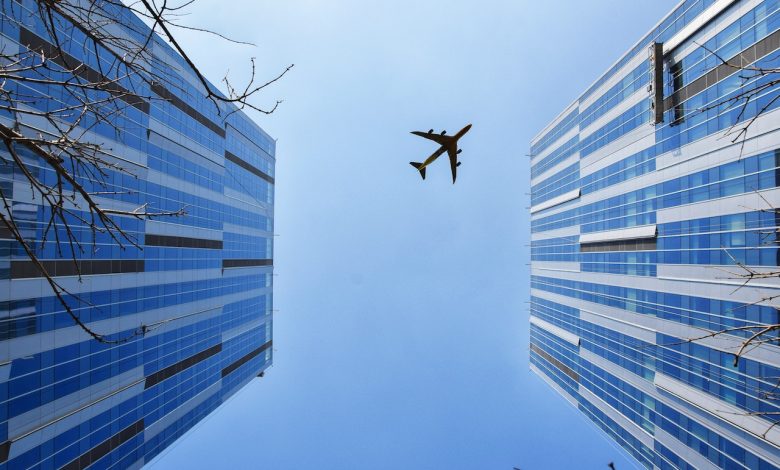Soaring Through the Skies: A Dive into the Diverse Styles of Aviation Planes

Picture yourself thousands of feet above the ground, experiencing the thrilling sensation of gliding through the open skies. Aviation planes encompass a wide range of styles that capture our fascination, from swift and sleek jets to vintage warbirds radiating timeless appeal. In this journey, we delve into the captivating realm of aviation, delving into the distinct attributes and intriguing histories behind these remarkable flying marvels, from pioneering engineering to aircraft interior plastics. Strap in, as we embark on an exhilarating exploration of the diverse world of aircraft!
A Glimpse into Aircraft Design History
The evolution of aircraft design is a captivating tale. It narrates the transformative impact of the Wright brothers’ airplane invention on our world. It also charts the progression of technology, leading to the emergence of new aircraft categories. Additionally, it showcases the evolutionary path of the aircraft industry over time.
The pivotal moment arrived in 1903 with the first powered flight, credited to the Wright brothers. Their pioneering work encompassed innovative technologies that made powered flight achievable, such as a potent engine for sustained flight and a wing-warping system for controlled maneuvering. This breakthrough ushered in a new era of aviation.
The subsequent years witnessed an exponential expansion in aircraft usage. Planes were utilized for military operations during World War I, subsequently transitioning to widespread commercial air travel in the 1920s. The 1930s marked the advent of novel aircraft types like helicopters and jet engines, propelling aviation to greater heights.
In the modern era, a myriad of aircraft types grace the skies worldwide. Airplanes facilitate passenger travel, cargo conveyance, and military operations. Helicopters excel in medical evacuation and search-and-rescue missions. Jet engines enable supersonic flight, while unmanned aerial vehicles (UAVs) find applications ranging from surveillance to delivery endeavors.
Varieties of Aircraft and Their Functions
Aviation encompasses an assortment of aircraft, each tailored to fulfill distinct roles. Here’s an overview of prevalent aircraft types and their applications:
Commercial Airlines: These large aircraft ferry passengers and cargo on regular schedules. Their spacious interiors accommodate numerous seats and ample luggage space.
Private Planes: Smaller planes cater to personal or business travel. With fewer seats and limited space, they cater to individualized requirements.
Cargo Planes: Engineered for transporting substantial cargo loads, these aircraft feature expansive cargo holds and minimal seating.
Military Aircraft: Serving diverse military roles, these planes contribute to transportation, combat, and reconnaissance missions.
Decoding the Science of Flight
The allure of flight has perpetually captivated human imagination. Over time, our inspiration from birds led to technological advancements that facilitated human flight. The inaugural powered flight, pioneered by the Wright brothers in 1903, marked the commencement of aviation’s journey.
An array of aircraft types thrives today, each characterized by distinct designs and purposes. The science underpinning flight resides in aerodynamics.
Aircraft wings are meticulously shaped to generate lift. Airflow over the wing’s upper surface surpasses that underneath, creating pressure disparities that yield lift—the force sustaining flight. Lift hinges on factors including wing shape, angle of attack (the angle of wing-to-airflow alignment), and velocity.
Thrusters, essential for propelling aircraft forward, are usually powered by engines. Engines encompass diverse types—piston engines, turboprop engines, jet engines, and electric motors—each optimized for specific aircraft categories.
The interplay of lift and thrust orchestrates flight, rendering the science of aviation comprehensible upon examination.
Present and Prospective Trends in Aerospace Engineering
Aerospace engineering undergoes continual evolution, propelled by emerging technologies and newfound challenges. Current challenges include augmenting aircraft fuel efficiency, mitigating climate change’s impact on design, and managing escalating air travel demand.
To counter these challenges, aerospace engineers explore innovative avenues, encompassing electric airplanes, aircraft featuring 3D-printed components, and drones. Electric airplanes, although nascent in development, promise heightened fuel efficiency compared to conventional counterparts. Aircraft incorporating 3D-printed parts aim to streamline manufacturing costs and timelines. Drones, increasingly integral, serve roles encompassing package delivery and agricultural surveys.
Aerospace engineering’s dynamic nature ensures its responsiveness to aviation’s ever-evolving needs. As technologies advance and novel challenges emerge, aerospace engineers remain poised to devise inventive solutions, perpetuating our journey through the boundless skies.
In Closing
Aviation planes span a panorama of forms and functions, each designed for specific objectives. From colossal passenger airplanes connecting global destinations to smaller craft catering to personal, recreational flights, the experience of soaring skyward within an aircraft engineered for flight is uniquely enchanting. Our aspiration is that this exposition grants you deeper insight into aviation planes and their diverse styles, enhancing your appreciation for the enchanting world that awaits as you embark on your next airborne adventure.


